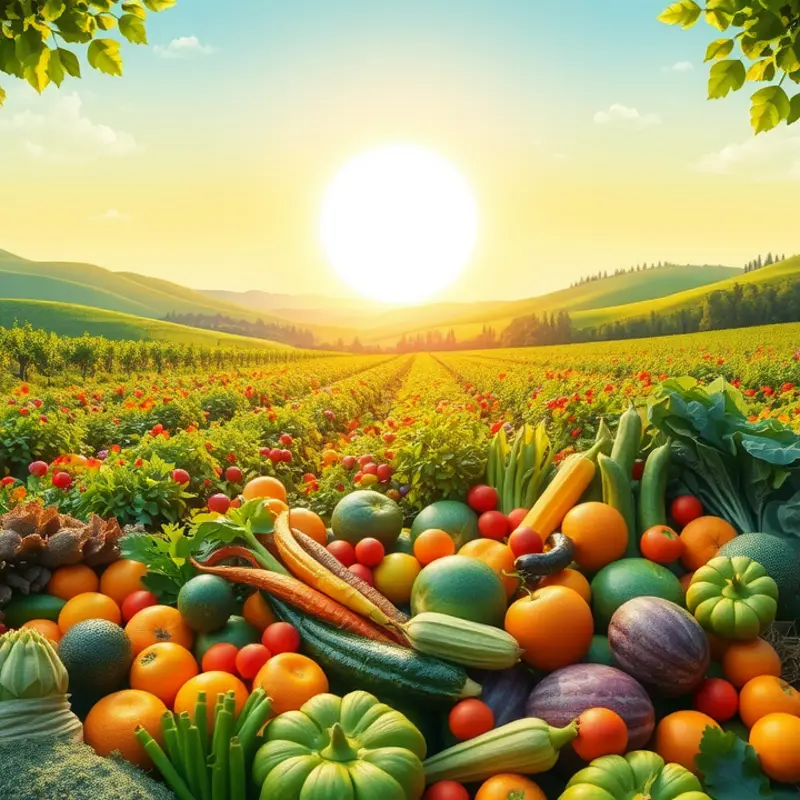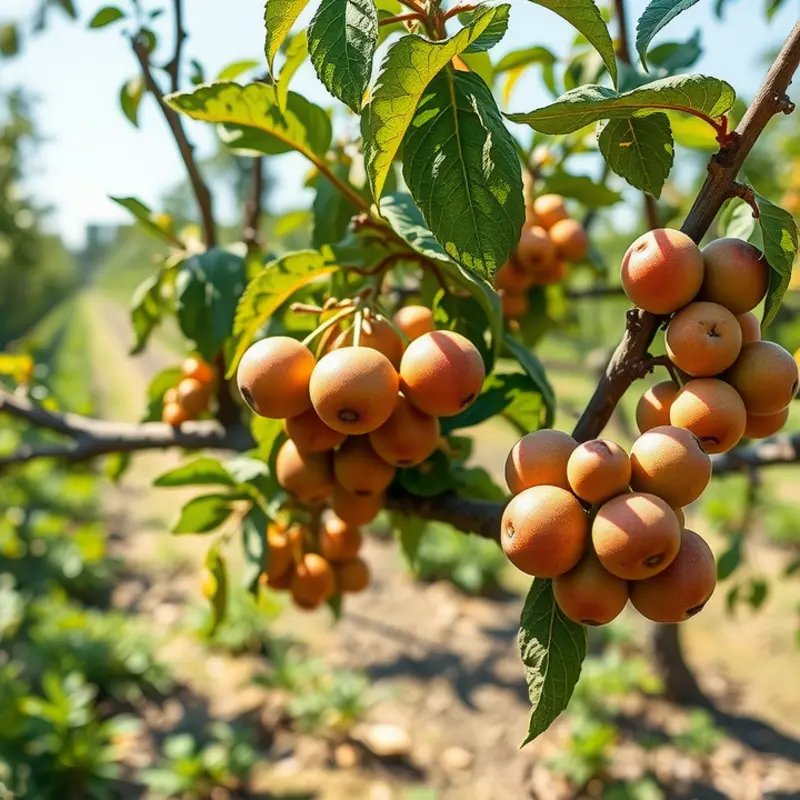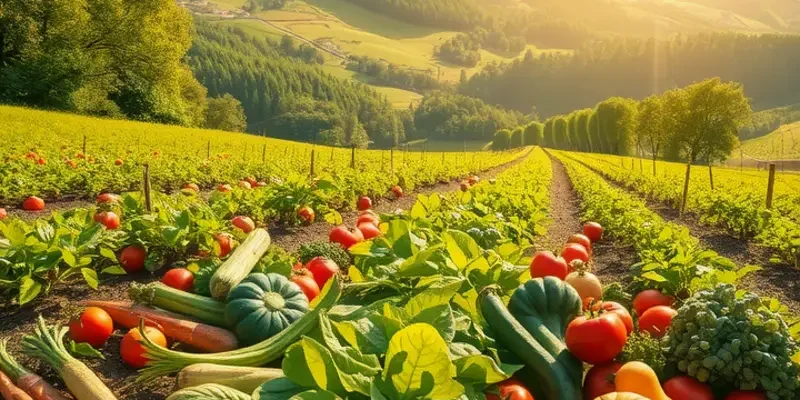Minimizing produce spoilage is essential for maintaining freshness, reducing waste, and saving money. By adopting effective food storage techniques and management practices, anyone can enjoy better quality vegetables and fruits. This guide provides clear strategies to keep your produce in top shape while maximizing its lifespan, ensuring you make the most of your grocery budget.
Understanding Produce Lifespans

Understanding the lifespan of various produce types is essential for effective storage and minimizing waste. Different fruits and vegetables have unique lifespans defined by their physiological properties and storage requirements. With this knowledge, you can plan better purchases and storage strategies.
All produce can be grouped into categories based on their perishability. Highly perishable items, such as berries and leafy greens, typically last just a few days after purchase. These should be consumed quickly and are best kept in the refrigerator. The cold environment slows down the spoilage process.
On the other hand, produce like apples and citrus fruits have a longer shelf life. These can last several weeks when stored properly. While refrigeration can extend their life, a cool, oxygenated environment often suffices. Ventilation is crucial to prevent moisture accumulation—a key factor in mold development.
Root vegetables such as potatoes and carrots present an interesting case. They prefer a dark, dry place to extend their lifespan to months rather than weeks. However, separating potatoes and onions is advisable; gases emitted by onions can accelerate the spoilage of potatoes.
Another class of produce, tropical fruits like bananas and avocados, benefit from storage at room temperature until they ripen. Once ripened, bananas should be stored separately from other fruits to retard further ripening processes. Avocados can be refrigerated upon reaching the desired ripeness to extend their usability.
Understanding these elemental differences among produce can lead to significant waste reduction. For example, buy only what you’re able to consume within the week for highly perishable items, whereas less perishable produce can be bought in bulk.
Additionally, knowing the ideal storage conditions—humidity and temperature—can help preserve freshness. Fridges are the go-to for high moisture retention, which is needed for leafy greens, while a pantry is preferable for dry items.
Familiarizing yourself with the concepts of first in, first out (FIFO) inventory management can also assist with minimizing waste. By using or consuming older produce first, you ensure nothing spoils needlessly. Incorporating meal planning that provides for a variety of perishable and semi-perishable foods within a week’s menu can further prevent spoilage.
Ultimately, a little knowledge about the lifespans and needs of your produce can make a considerable difference. Not only does this reduce food waste, but it also enhances sustainability by decreasing the need for waste disposal. For more tips on storing your goods sustainably, check out this guide on eco-smart kitchen storage.
Efficient Storage Solutions

When it comes to preserving the freshness of fruits and vegetables, effective storage techniques can significantly extend their shelf life. Understanding optimal temperatures, humidity levels, and selecting the right storage containers are crucial factors in this process.
Temperature and Humidity Control
Most refrigerators provide adjustable temperature settings in various compartments, allowing precision control for different types of produce. Leafy greens and other delicate vegetables prefer cold, moist environments, typically below 40 degrees Fahrenheit with high humidity. On the other hand, fruits like citrus and apples do well in a slightly higher temperature range, around 40-45 degrees Fahrenheit.
To maintain appropriate humidity levels, consider using the adjustable vents found in many crisper drawers. Keeping these closed helps retain moisture, ideal for vegetables. Conversely, open vents create a drier environment better suited for fruits. It’s a balance that prevents transpiration, where plants lose moisture after harvest, potentially leading to wilting and spoilage.
Appropriate Containers
Using the right storage containers also plays a significant role in minimizing waste. It’s essential to understand that not all produce benefits from the same type of container. Vegetables like carrots and celery should be kept in airtight containers or wrapped in aluminum foil, which helps retain moisture without trapping excess condensation.
On the other hand, berries and grapes should be stored in well-ventilated containers to avoid mold growth. A simple solution is to transfer these fruits into perforated containers or place a folded paper towel at the bottom of the container to absorb excess moisture.
Remember to wash and dry these containers regularly to ward off bacteria that could trigger early spoilage.
Ethylene Gas and its Impact
Ethylene gas is an often-overlooked factor that influences spoilage rates. Some fruits, such as bananas, apples, and tomatoes, emit this natural plant hormone, which accelerates ripening. Storing these separate from ethylene-sensitive produce like leafy greens and cucumbers can significantly prolong their freshness.
To dive deeper into eco-friendly practices for storage and reduce kitchen waste, you can explore eco-smart kitchen storage, which integrates sustainable methods into your routine.
Implementing these efficient storage solutions not only preserves freshness but also contributes to a reduction in food waste. By utilizing the optimal conditions for each type of produce, you can enjoy longer-lasting fruits and vegetables that retain their nutritional integrity and flavor.
Final words
Adopting the right practices for food storage and management can significantly reduce produce spoilage. Understanding the lifespans of different fruits and vegetables, along with implementing efficient storage solutions, sets the foundation for enjoying fresh produce longer. By taking simple, actionable steps to care for your food, you’ll minimize waste and make healthier choices. Remember, a little effort goes a long way in maximizing the lifespan of your grocery items and enhancing the quality of your meals.







